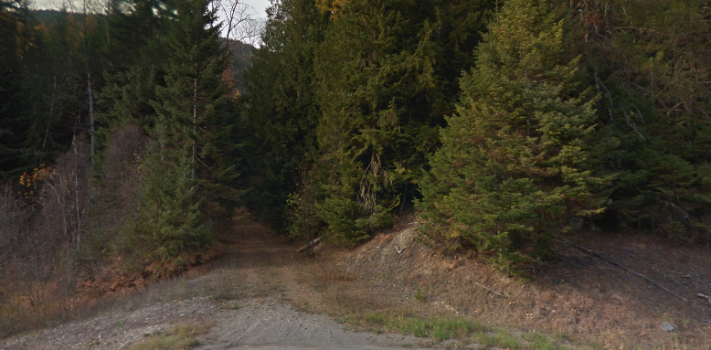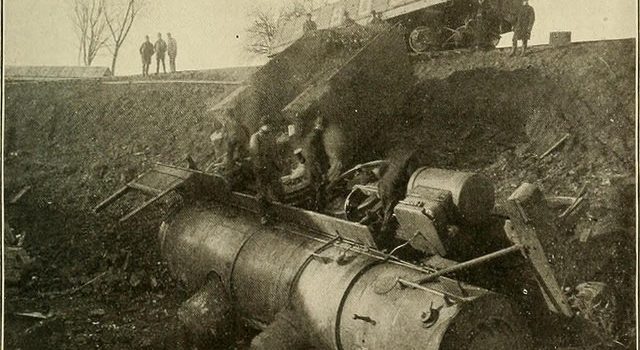“Too many people spend money they haven’t earned to buy things they don’t want to impress people they don’t like.” – Will Rogers
- Ad LifeSaver 20K JerryCan Water PurifierThe best water jerrycan you can buy on the market! Mention Survivalblog for a Free Filter ($130 Value)
- Ad STRATEGIC RELOCATION REALTYFOR SALE: Self-sustaining Rural Property situated meticulously in serene locales distant from densely populated sanctuary cities. Remember…HISTORY Favors the PREPARED!
Preparedness Notes for Tuesday — November 30, 2021
Satirical novelist Jonathan Swift was born on November 30th, 1667.
—
We are seeking one or two more prize donors for the SurvivalBlog non-fiction writing contest. It is a great way to promote your business. If you have a product or service that would appeal to SurvivalBlog readers and you are willing to commit to providing a prize with a value of at least $200 for at least three contest rounds (six months), then please contact us. Thanks!
- Ad Click Here --> Civil Defense ManualNOW BACK IN STOCK How to protect, you, your family, friends and neighborhood in coming times of civil unrest… and much more!
- Ad Civil Defense ManualClick Here --> The Civil Defense Manual... The A to Z of survival. Looks what's in it... https://civildefensemanual.com/whats-in-the-civil-defense-manual/
The Incredible Disappearing Retreat in the Woods (Update)
Today I’m providing an update and expansion to an article that I posted back in early 2009.
This is something that I first shared with a few of my consulting clients. It is an approach at rural retreat construction that can make a rural retreat of 10 acres or more essentially “disappear”.
House SitEs and Road Building
 If there is a thick screen of trees or tall brush between the public road and potential building sites at your undeveloped country retreat parcel, then your property might have a good candidate for a “hidden retreat house”. This is accomplished by making as few changes as possible when the parcel is viewed from the county road. No fancy entry gate, no mailbox, basically nothing new that is visible except a small diameter drainage culvert by the side of the county road and a narrow semi-improved road that will just look like a disused farm machinery access lane. Hopefully, there isn’t already a “lip” in the road (as shown, above) that can make a small and otherwise unobtrusive lane look more prominent. County and state highway paving crews often add lips, “as a courtesy” to landowners.
If there is a thick screen of trees or tall brush between the public road and potential building sites at your undeveloped country retreat parcel, then your property might have a good candidate for a “hidden retreat house”. This is accomplished by making as few changes as possible when the parcel is viewed from the county road. No fancy entry gate, no mailbox, basically nothing new that is visible except a small diameter drainage culvert by the side of the county road and a narrow semi-improved road that will just look like a disused farm machinery access lane. Hopefully, there isn’t already a “lip” in the road (as shown, above) that can make a small and otherwise unobtrusive lane look more prominent. County and state highway paving crews often add lips, “as a courtesy” to landowners.
For a hidden retreat, your road should be just lightly road-rocked for the first 100 feet, to encourage grass to actually grow up in it. Design the roadway leading to the back end of the property to be narrow and in a serpentine path, so that additional trees can be planted to block any view down the lane. You will of course need to brief and oversee your road-building contractors, so that they don’t do the usual “wide, well-cleared road, with lots of rock.”
The key words are: Narrow, Uninviting, and Nothing of Value to steal. Those are the impressions that you want to lave with passers-by. And when I say narrow, I mean: So narrow that the bushes might scratch the paint on a standard-size pickup. If in doubt: Plant more trees. But take note that if you plant non-native tree species that they will actually stand out.
Either have grid power established with an underground line, or skip it altogether and put in a photovoltaic (PV) power system. Thus, there are no power poles and visible lines to follow and give away the location. And again: No mailbox!
If it is feasible and affordable, I recommend building a masonry house with small windows and with either a native rock or an earth-tone facade. The roof should be green metal — all the better to blend in. Do not clear trees to “open up a view”, since that would likely provide line of sight from any nearby roads, revealing the house.
 The aforementioned measures might all seem a bit “Bat Cave”, but I have indeed seen this approach used effectively at a 30-acre retreat on the Big Island of Hawaii. His lane just looks like a narrow break in a sugarcane field that is designed to accommodate tractors. Anyone approaching it in a car or truck would think: “There will be no place for me to turn my vehicle around.” The owner — who has owned the property since 1997 — mentioned that a few of his neighbors’ houses have been burglarized, but that his house has never been. The house is invisible from the public road and from all of the neighboring houses. So opportunistic burglars “just passing through” don’t even know that there is a house there. Again, his lane just looks like something used by farm tractors, not by a homeowner.
The aforementioned measures might all seem a bit “Bat Cave”, but I have indeed seen this approach used effectively at a 30-acre retreat on the Big Island of Hawaii. His lane just looks like a narrow break in a sugarcane field that is designed to accommodate tractors. Anyone approaching it in a car or truck would think: “There will be no place for me to turn my vehicle around.” The owner — who has owned the property since 1997 — mentioned that a few of his neighbors’ houses have been burglarized, but that his house has never been. The house is invisible from the public road and from all of the neighboring houses. So opportunistic burglars “just passing through” don’t even know that there is a house there. Again, his lane just looks like something used by farm tractors, not by a homeowner.
 A few years ago, I had a consulting client in an eastern state who owns a retreat in a region with dense woods tell me that he refurbished a hunting cabin (or “Camp”), as they are called locally. This cabin, on 20-odd acres, sat at the end of a lane that was so narrow that his real estate agent had trouble finding it, even with provided driving directions and GPS. The cabin had not been used at all in several years, so the lane had shin-high grass and was nearly overgrown by encroaching trees. As they walked in, the agent said: “Well, you can have someone come here with chainsaws and clear this out, in a jiffy.” He bought the cabin with cash but then he intentionally left the lane just as it was.
A few years ago, I had a consulting client in an eastern state who owns a retreat in a region with dense woods tell me that he refurbished a hunting cabin (or “Camp”), as they are called locally. This cabin, on 20-odd acres, sat at the end of a lane that was so narrow that his real estate agent had trouble finding it, even with provided driving directions and GPS. The cabin had not been used at all in several years, so the lane had shin-high grass and was nearly overgrown by encroaching trees. As they walked in, the agent said: “Well, you can have someone come here with chainsaws and clear this out, in a jiffy.” He bought the cabin with cash but then he intentionally left the lane just as it was.
 Out west, the woods tend to be less dense, but they are largely coniferous. This is an advantage, since the trees don’t drop leaves, in the winter. In contrast, many “hidden” houses in eastern states can be seen quite clearly, when the deciduous leaves are down. When doing some land-buying research on behalf of consulting clients, I’ve found a few properties in wooded, mountainous areas that have nearly unrecognizable access roads. In most cases, I haven’t seen these properties in person. Rather, I’ve only seen them through the use of Google Street Views imagery. (I’ve included a few such images of similar lanes in this article.)
Out west, the woods tend to be less dense, but they are largely coniferous. This is an advantage, since the trees don’t drop leaves, in the winter. In contrast, many “hidden” houses in eastern states can be seen quite clearly, when the deciduous leaves are down. When doing some land-buying research on behalf of consulting clients, I’ve found a few properties in wooded, mountainous areas that have nearly unrecognizable access roads. In most cases, I haven’t seen these properties in person. Rather, I’ve only seen them through the use of Google Street Views imagery. (I’ve included a few such images of similar lanes in this article.)
Speaking of Google Street Views, property owners can request that the view of their address or even just their parked vehicle be blurred. That may or may not be an advantage. If you do so and you are the only one in many miles to have a place blurred out, then it might actually call attention to your dwelling. You can see an example of a blurred street view, below:
Neighbors Will Still Know
Granted, the approach that I’ve described will not protect your retreat from being known by your neighbors. Twelve-year-old boys tend to hike around just about everywhere, and they pay little attention to “No Trespassing” signs. Ditto for a lot of hunters and quite a few fishermen. But statistically, a hidden retreat will be much safer, both before the Schumer hits the fan, and after.
An even more elaborate disappearing act is to build a fully underground house with a hidden entrance and air vents hidden in what appears to just be a utility building, such as a large pump house, a tractor shed, or workshop. But, of course, that gets much more expensive.
I look forward to your comments via e-mail. As space permits, I will post them in the next Snippets column.
- Ad California Legal Rifles & Pistols!WBT makes all popular rifles compliant for your restrictive state. Choose from a wide range of top brands made compliant for your state.
- Ad Ready Made Resources, Trijicon Hunter Mk2$2000 off MSRP, Brand New in the case
SurvivalBlog’s News From The American Redoubt
This weekly column features news stories and event announcements from around the American Redoubt region. (Idaho, Montana, eastern Oregon, eastern Washington, and Wyoming.) Much of the region is also more commonly known as The Inland Northwest. We also mention companies of interest to preppers and survivalists that are located in the American Redoubt region. Today, we cover Missoula, Montana’s most recent resident grizzly bear sow. (See the Montana section.)
Idaho
Chronic wasting disease found in two deer in Idaho.
o o o
Idaho Supreme Court consolidates redistricting map lawsuits.
o o o
I stumbled into this vlog: Living Right Debt Free Homestead.
o o o
Former US representative challenges Idaho attorney general.
o o o
Idaho unemployment rate drops to 2.8%, among best in nation.
Continue reading“SurvivalBlog’s News From The American Redoubt”
- Ad USA Berkey Water Filters - Start Drinking Purified Water Today!#1 Trusted Gravity Water Purification System! Start Drinking Purified Water now with a Berkey water filtration system. Find systems, replacement filters, parts and more here.
- Ad USA Berkey Water Filters - Start Drinking Purified Water Today!#1 Trusted Gravity Water Purification System! Start Drinking Purified Water now with a Berkey water filtration system. Find systems, replacement filters, parts and more here.
The Editors’ Quote of the Day:
“The market is not a place, a thing, or a collective entity. It is a process.” – Ludwig von Mises
- Ad Don't wait - get the ultimate US-made ultra-high performance US-made SIEGE Stoves and stunning hand-crafted SIEGE belts for Christmas. For stocking-stuffers see our amazing fire-starters. Gifts that can save lives. Big Sale!Every bespoke SIEGE buckle goes through an hours-long artisanal process resulting in a belt unlike anything else, with blazing fast performance and looks and comfort to match.
- Ad Survival RealtyFind your secure and sustainable home. The leading marketplace for rural, remote, and off-grid properties worldwide. Affordable ads. No commissions are charged!
Preparedness Notes for Monday — November 29, 2021
This is the birthday of writer Clive Staples (“C.S.”) Lewis, who was born in 1898 and died on 22 November 1963.
—
Our George Patton’s Birthday sale is continuing, at Elk Creek Company. Be sure to check out the reduced prices on all of our pre-1899 antique cartridge guns, percussion replicas, percussion conversion cylinders, bayonets, and knives. The sale ends on Saturday, December 11th, 2021.
—
Several of our advertisers are running Cyber Monday sales. Here is just one example: GunMag Warehouse is selling Lancer L5 AR-15 223/5.56 30-Round Advanced Warfighter magazines for just $11.99 each!
—
Today, another review, written by our Redoubtable Field Gear Editor, Pat Cascio.
- Ad Trekker Water Station 1Gal Per MinuteCall us if you have Questions 800-627-3809
- Add Your Link Here
Ruger American .243 Rifle and Vortex Scope, by Pat Cascio
I used to enjoy a day of fishing, even if I never got a nibble – it was still a great day. During big game season, I used to love humping up and down logging roads, or in some areas, driving logging roads, looking for big game, in particular black tail deer in Western Oregon. I’m no spring chicken any longer, and I hate to admit that. My days of going around on foot, looking for game are over. Same for driving the logging roads. My advanced age and osteoarthritis just don’t allow me to spend hours on end driving, or hiking around looking for game. The pain isn’t worth the hunt. And, I sincerely thank the many SurvivalBlog readers who sent me suggestions on how to beat the pain – I’ve tried everything except surgery, and on a fixed income, elective surgery isn’t an option.
I miss hunting! However, I sure don’t miss target shooting. Just shooting at targets is a lot of fun, if you ask me. And, I love an accurate rifle – and Ruger has come up with some winners with the American Rifle line-up. It really pleases me to fire some nice tight groups on paper, its relaxing, and fun at the same time.
We’re looking at the Ruger American Rifle in .243 Winchester, and I’ve always found this round to be extremely accurate, with light recoil – a cartridge that won’t beat my shoulder to death. Up until the latest, and ongoing ammo drought, I could find .243 Winchester ammo for around $13.00 per box of 20 rounds. These days, there is none to be found in my neck of the woods, at any price. So, as is the case, I turned to the good folks at Black Hills Ammunition for help. They sent me samples of their 80-gr Hornady GMX and 85-gr Barnes TSX for use in this article – more on the results later.
As is the case, many times, Ruger hit it out of the ballpark with their American Rifle line. I’ve tested several of these guns. However, I was really looking forward to testing the .243 Winchester rifle this time around. I actually have had this rifle for quite some time – sitting in the box, in the corner of my office. Most people who see my office, don’t understand how I can find anything in it – even my desktop at times, is cluttered.
Some stats on the .243 Winchester is in order. First off all, this line of rifles are a bargain, and let’s not forget that, if you shop around, you can usually find most of Ruger’s firearms discounted. That’s a win for the consumer. The model I selected for this test is the American Rifle, and I elected to have the factory-installed Vortex Crossfire II scope on it, and it is a 3-9×40 scope. The Vortex is an outstanding scope for the money – better quality than scopes costing two or three times as much, but providing clarity that is outstanding in my humble opinion. Plus this scope has the Dead-Hold BDC (Bullet Drop Compensator) and it is mounted on a one-piece Picatinny scope base, and zeroed at the Ruger factory. My sample was perfect for left-right adjustment and only off about half an inch in elevation – great job, Ruger.Continue reading“Ruger American .243 Rifle and Vortex Scope, by Pat Cascio”
Recipe of the Week: White Meat Chicken Planks
The following recipe for White Meat Chicken Planks is from SurvivalBlog reader John M.. He writes:
“Over the years I have developed a recipe that has amazed people who I have served this to, it is a taste (is a wow recipe) and crust very similar to KFC at a fraction of the cost. The cold chicken leftovers are even better. Some people question using 2 cups of Frank’s hot sauce, but it’s not even noticeable in the finished planks. I prefer to prepare this on an outside grill due to the oil splatter.”
Ingredients
- 4 to 6 chicken breasts sliced into 1” strips
- 2 cups Frank’s hot sauce
- 4 to 6 cups of self-rising flour
- 1 to 2 cups whole milk
- 2 to 4 eggs
- 1/ 4 cup salt, pepper, onion powder (to taste)
- 1 gallon cooking oil or olive oil
Directions
I use a 2 to 3 gallon pot, ( the higher the sides the less splatter. ) heat the grill or stove to 400 to 450, it’s a takes time to get this amount of oil to temp needed, I use the drop of water into the oil ( when it sizzling) to know the temp is right. Be careful with the splatter to minimize a false fire.
Use a large bowl to hold the flour, mix in salt, pepper, and onion powder, this help the crust to provide flavor. Use a second large bowl, to create your batter coating, pour in the hot sauce, milk, and eggs, and stir until you see the ingredients are mixed.
Using 4 to 5 planks at a time dip them into the batter, then transfer to the flour bowl and press the chicken into the mix until you have a thick coating, using long tongs transfer to the oil pot and cook them for 8 to 12 minutes, you will have regular or extra crispy delight. I watch the chicken for color change on the crust, when ready remove and place the planks on a rack to allow all the crust to dry. Repeat the process for the rest of the planks.
This is a time intensive recipe but well with effort when you taste the planks.
Warning….make sure you cook enough, because the crowd will back for more. Enjoy
—
Do you have a favorite recipe that would be of interest to SurvivalBlog readers? In this weekly recipe column, we place emphasis on recipes that use long term storage foods, recipes for wild game, dutch oven and slow cooker recipes, and any that use home garden produce. If you have any favorite recipes, then please send them via e-mail. Thanks!
Economics & Investing For Preppers
Here are the latest news items and commentary on current economics news, market trends, stocks, investing opportunities, and the precious metals markets. We also cover hedges, derivatives, and obscura. Most of these items are from the “tangibles heavy” contrarian perspective of SurvivalBlog’s Founder and Senior Editor, JWR. Today, we look at the Red Friday stock market crash on Friday, November 26th. (See the Economy & Finance section.)
Precious Metals:
o o o
Big flotilla of illegal gold miners splits up in Brazil.
Economy & Finance:
At Zero Hedge: ‘Red Friday’ – Stocks Suffer Worst ‘Black Friday’ Selloff In 70 Years.
o o o
Dow tumbles 900 points for worst day of year on fears of new Covid variant, S&P 500 drops 2%. JWR’s Comment: Something tells me that they’re cranking up the Plunge Protection Team machine. (And the mainstream media propagandists will be developing a new narrative, to match.
o o o
Morgan Stanley: Here’s Why We See No Rate Hikes In 2022 And What That Means For Markets.
The Editors’ Quote of the Day:
“If you can be content right now, then you’ll always be content, because it’s always right now.” – Willie Nelson
Preparedness Notes for Sunday — November 28, 2021
On November 28th, 1520, Magellan finally reached the Pacific Ocean after navigating the dangerous straits on the southern tip of South America that now bear his name. He became the first European explorer to reach the Pacific from the Atlantic.
PEGs: The Parallel Economy for Traditionalist Americans
As our nation spirals out of control with “woke” socialist politics and normalization of perversion, there has been a natural and rational backlash by conservatives who want no part of this. Generally, the economic side of this divergence has been dubbed The Parallel Economy. Thusfar, this is a small, nascent movement. But as inflation increases, I predict that it will grow much more popular. And eventually, once a sovereign cryptocurrency is announced, the Parallel Economy may divorce itself almost entirely from The System. (Or as some call it, The Beast System.)
What I propose is that informal Parallel Economy Groups (PEGs) be started at the community level. You haven’t heard of the PEG acronym until now, because I just coined it. PEGs will naturally be extensions of existing community groups like churches, farmers’ markets, and grange halls. There will be no need for formal organization. I believe that PEGs will just naturally coalesce, as mainstream society degenerates around them. A PEG needs no bylaws, nor club meetings, nor formal leadership. It can simply be an informal agreement among like-minded people who just want to be left alone. We can trade skills and man-hours of labor for foodstuffs, various goods, or services. Just leave us alone, and we will get by, just fine.
It Takes a Currency
To be successful, any economy needs more than just barter. It needs a functioning currency. Let’s face it: Apples are fine for a weekend of barter, but after a month, they rot. We need to use something more durable, divisible, and fungible. Up until 1964, the U.S. had real money that could be exchanged for silver on demand. The so-called “money” that has been issued in the U.S.since 1965 has been based entirely on Federal Reserve Note (FRN) “Dollars” — a fiat paper currency with debased coins that are just silver-plated copper tokens. This violates the U.S. Constitution’s concept of a “Dollar.” (Article 1, Section 9, Clause 1 of the Constitution and its Seventh Amendment use the term “dollar”. That term is codified as a coin containing Troy 371.25 grains of fine silver.) Even the pre-1982 copper pennies have been replaced by copper-flashed zinc tokens. The FRN is just a convenient fiction that allows massive government spending and currency inflation. The FRN is both a fraud and a hidden form of taxation. By accepting the FRN Funny Money, we’ve been robbed.
Let me give you an illustration: A 1964 Ford Mustang had a sticker price of $2,240. But a 2022 Ford Mustang has a sticker price of $32,705. And, parenthetically, a restored 1964 Mustang is now worth around $35,000. So, back in 1964 if you’d cashed your paycheck and bought a ’64 Mustang, then your earnings would have held their value. But if you’d put paper FRNs under your mattress, then they would have lost most of their purchasing power by 2021. The cumulative rate of inflation since 1964 has been 792.2%. Again, we’ve been robbed.Continue reading“PEGs: The Parallel Economy for Traditionalist Americans”
JWR’s Meme Of The Week:
The latest meme created by JWR:
To share this, you can find it here: https://kapwi.ng/c/bp18mqV_qV
Meme Text: Australia: From Penal Colony to Penal Colony in Only 233 Years
Related news link: Tens of thousands rally against Covid curbs in Europe and Australia.
The Editors’ Quote of the Day:
“Then Jesus said unto them, My time is not yet come: but your time is alway ready.
The world cannot hate you; but me it hateth, because I testify of it, that the works thereof are evil.
Go ye up unto this feast: I go not up yet unto this feast: for my time is not yet full come.
When he had said these words unto them, he abode still in Galilee.
But when his brethren were gone up, then went he also up unto the feast, not openly, but as it were in secret.
Then the Jews sought him at the feast, and said, Where is he?
And there was much murmuring among the people concerning him: for some said, He is a good man: others said, Nay; but he deceiveth the people.
Howbeit no man spake openly of him for fear of the Jews.
Now about the midst of the feast Jesus went up into the temple, and taught.
And the Jews marvelled, saying, How knoweth this man letters, having never learned?
Jesus answered them, and said, My doctrine is not mine, but his that sent me.
If any man will do his will, he shall know of the doctrine, whether it be of God, or whether I speak of myself.
He that speaketh of himself seeketh his own glory: but he that seeketh his glory that sent him, the same is true, and no unrighteousness is in him.
Did not Moses give you the law, and yet none of you keepeth the law? Why go ye about to kill me?
The people answered and said, Thou hast a devil: who goeth about to kill thee?
Jesus answered and said unto them, I have done one work, and ye all marvel.
Moses therefore gave unto you circumcision; (not because it is of Moses, but of the fathers;) and ye on the sabbath day circumcise a man.
If a man on the sabbath day receive circumcision, that the law of Moses should not be broken; are ye angry at me, because I have made a man every whit whole on the sabbath day?
Judge not according to the appearance, but judge righteous judgment.
Then said some of them of Jerusalem, Is not this he, whom they seek to kill?
But, lo, he speaketh boldly, and they say nothing unto him. Do the rulers know indeed that this is the very Christ?
Howbeit we know this man whence he is: but when Christ cometh, no man knoweth whence he is.
Then cried Jesus in the temple as he taught, saying, Ye both know me, and ye know whence I am: and I am not come of myself, but he that sent me is true, whom ye know not.
But I know him: for I am from him, and he hath sent me.
Then they sought to take him: but no man laid hands on him, because his hour was not yet come.
And many of the people believed on him, and said, When Christ cometh, will he do more miracles than these which this man hath done?
The Pharisees heard that the people murmured such things concerning him; and the Pharisees and the chief priests sent officers to take him.
Then said Jesus unto them, Yet a little while am I with you, and then I go unto him that sent me.
Ye shall seek me, and shall not find me: and where I am, thither ye cannot come.
35 Then said the Jews among themselves, Whither will he go, that we shall not find him? will he go unto the dispersed among the Gentiles, and teach the Gentiles?
What manner of saying is this that he said, Ye shall seek me, and shall not find me: and where I am, thither ye cannot come?
In the last day, that great day of the feast, Jesus stood and cried, saying, If any man thirst, let him come unto me, and drink.
He that believeth on me, as the scripture hath said, out of his belly shall flow rivers of living water.
(But this spake he of the Spirit, which they that believe on him should receive: for the Holy Ghost was not yet given; because that Jesus was not yet glorified.)
Many of the people therefore, when they heard this saying, said, Of a truth this is the Prophet.
Others said, This is the Christ. But some said, Shall Christ come out of Galilee?
Hath not the scripture said, That Christ cometh of the seed of David, and out of the town of Bethlehem, where David was?” – John 7: 6-42 (KJV)
Preparedness Notes for Saturday — November 27, 2021
November 27th is the birthday of Ludwig Loewe (November 27, 1837 – September 11, 1886). He was a merchant, manufacturer, philanthropist, and a member of the German Reichstag. Loewe’s companies became involved in the production of armaments, employing famous designers and creating many notable guns. Ludwig Loewe Company of Berlin produced large numbers of Mauser bolt action rifles, most famously used in the Second Boer War. They also produced licensed copies of S&W single-action top-break revolvers. (Pictured.) Many Loewe-made guns are stamped with a Star of David. The Loewe Company became part of the DWM conglomerate in 1897. Hence, all “Loewe” maker-marked guns are Federally-exempt pre-1899 antiques.
—
There are just three days left to send your entry for Round 97 of the SurvivalBlog non-fiction writing contest. Round 97 ends on November 30th. Please e-mail us your entry, as an e-mail attachment. Remember that there is a 1,500-word minimum, and that articles on practical “how-to” skills for survival have an advantage in the judging.
















